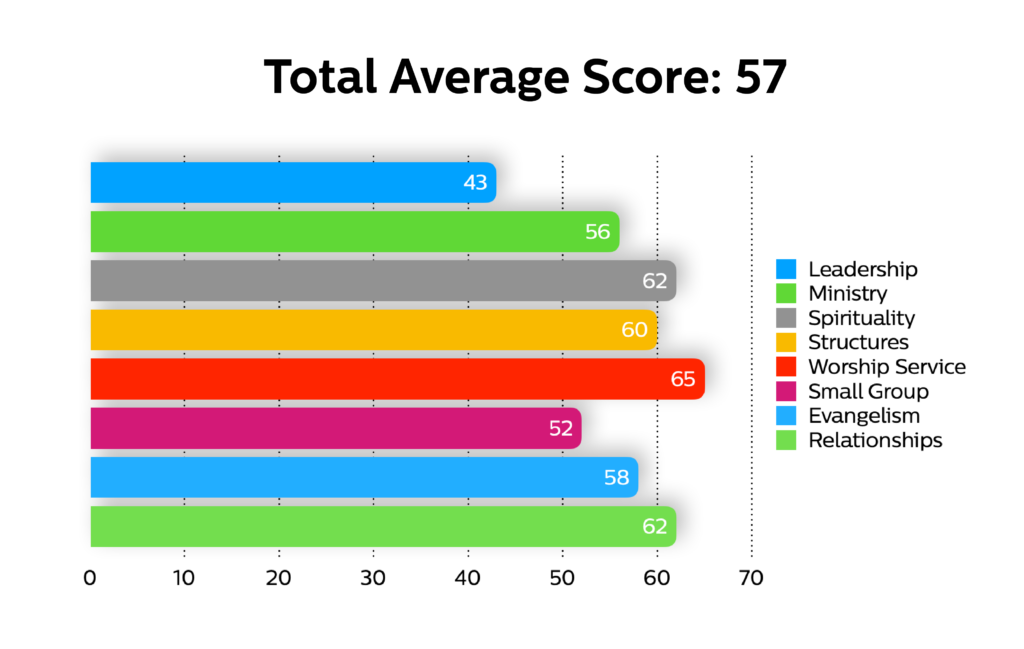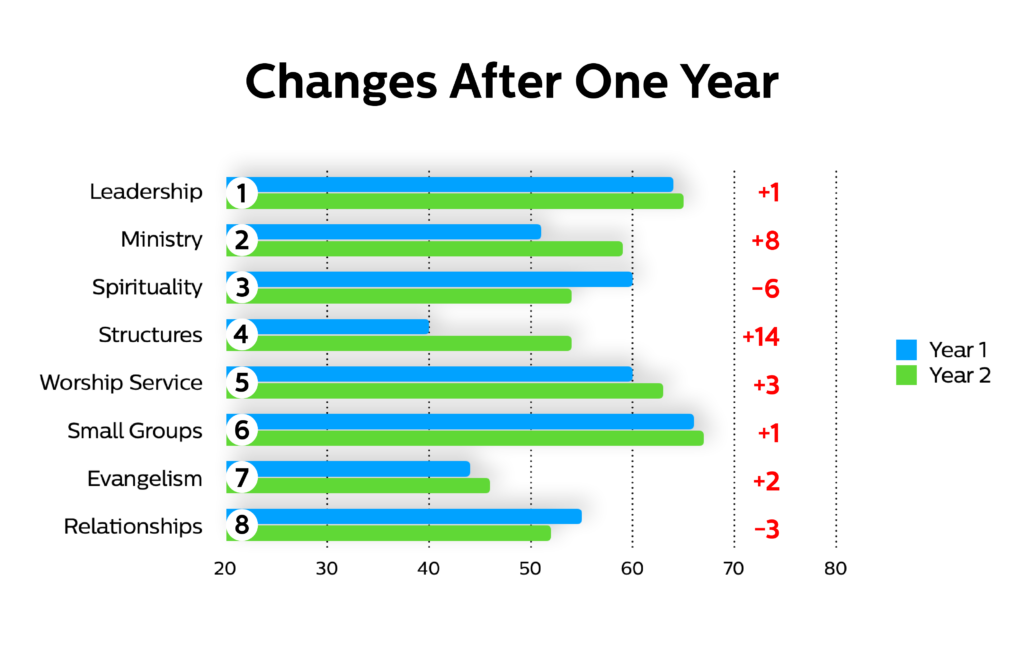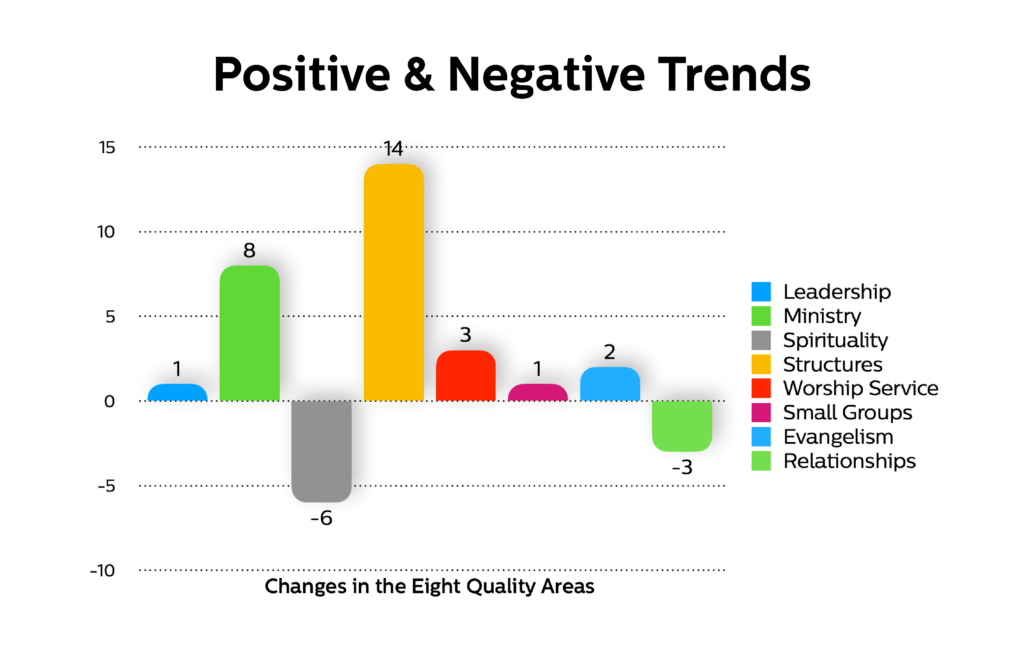By: Gary Rohrmayer
How can the Natural Church Development Survey help your church?
1. The survey will close the gap between lay leaders and pastoral staff.
Pastors sold out to the cause of Christ think about ministry 24/7. How much time do your committed lay leaders think about ministry in the local church? As a layperson in my church, I now know the answer to that question. Not as much as the pastor thinks! This mental focus alone can cause a large gap of misunderstanding. The pastor feels the church’s needs are not necessarily what the congregation perceives. The NCD Survey is a great way to close that gap of misunderstanding and constructively bring more harmony and health into the church.
I can’t tell you how often pastors have said, “My staff and I thought we knew what the weak systems were in our church, but we were completely caught off guard by the results. If we had gone in our direction, we would have wasted so much time, created confusion, and addressed only our felt needs as staff and not the real needs of the congregation.”
2. The survey will help you identify the weak systems that needs to be addressed in your ministry from the perspective of your key leaders.
I am a big proponent of systems theory. Too often, we think we have a people problem, but we really have a systems problem. I define church systems as reproducible and interconnected processes by which the church actualizes its values and achieves its mission.
Every healthy church values leadership, evangelism, spiritual formation, service, loving relationships and small groups. So the question is, do you have a reproducible and interconnected process that:
- Empowers leaders into the harvest?
- Ensures inspirational worship gatherings?
- Encourages evangelism throughout the community?
- Stimulates spiritual passion in every believer?
- Promotes healthy relationships in your community of faith?
- Connects people in healthy small groups?
- Deploys people into ministry?
- Builds organizational health?
The Natural Church Development Survey will help pinpoint the underdeveloped system that needs attention. Thus, it gives you a starting point in your strategic planning process.
3. The survey reveals the morale and needs of your key leaders and influencers in the church.
The quality side of ministry is soft and subjective because it is based on people’s attitudes, feelings and perspectives. The NCD Survey can give you an accurate read on the morale of your key leaders. If a church scores a total average in the 50s, it has above-average morale. The church that scores below 50 has below-average morale. In my work, the highest score I have seen is 77. Not only is this church one of the fastest-growing churches in our region, but it also has a high level of optimism that fuels the growth.

From this sample profile, we see that the key leaders in the church feel that the church is in a great place. This average score of 57 is considered an above-average health score, which means that the quality of the services is in a healthy range. They might be experiencing some level of numerical growth but are probably plateaued and facing a growth barrier. NCD International reports that a church whose average score is 65 or above is experiencing numerical growth.
What else can we learn from this snapshot?
Areas of Strength: Here, the leaders felt their church had a vital worship experience, a high level of relational harmony and a great sense of spiritual passion with sound systems and structures.
Areas for Focus: The leadership system needs to be fully developed here. Through this score, your leaders need to be empowered for ministry, spiritual development, better delegation, more precise goals, more robust communication within the leadership structure and more support in their ministries through coaching.
Quality growth is measured by your critical leaders’ attitudes, feelings and perspectives toward the church’s programs, people and progress.
4. The survey provides a measurable process for improving the quality of your ministry.
There are two ways to measure the health of your church.
- Quantitative Growth is built around critical numbers and their percentages.
- New Visitor Ratio: How many new visitors do you need in an average month to grow your church?
- Baptism Ratio: What is a healthy percentage between the average worship attendance and the number of baptisms annually?
- Giving Ratio: What is a healthy dollar amount given per person on an average Sunday?
- Serving Ratio: What is a healthy percentage of average attendees and those engaged in a ministry?
- Small Group Ratio: What is a healthy percentage of those attending on an average weekend and those engaged in a small group?
- Membership Ratio: What is a healthy percentage of those attending on an average weekend and those who are committed members?
- Leadership Ratio: How many new leaders are added to your leadership community annually?
- Qualitative Growth is measured through the attitudes, feelings and perspectives towards people, programs and the progress of the church.
In doing the NCD Survey every year, you can see the measurable results of your team’s work in improving that weak area of your ministry and how that affects all the other ministry areas. Here is an example of one church’s journey:

This church put significant energy into improving the structures or systems which increased by 14 points. They improved the overall quality of the ministry by 20 points. This means they significantly raised the morale of their leaders. Six out of the eight areas had positive growth; only two areas slipped in quality. This could be interpreted as people focusing too much on structures and systems, and because of that, spiritual formation and relationships took a hit. In addressing their new area of focus, which is need-oriented evangelism, they will need to focus on the how-to by strengthening that area with a greater sensitivity to relationships and a more profound dependence on God in the process.

Doing repeated surveys will help you raise the quality of your ministry and also help you tackle it more constructively and sensitively.
5. The survey helps the pastor and leaders think of ministry in terms of process.
In his letter to the church in Ephesus, Paul wrote, “So Christ himself gave the apostles, the prophets, the evangelists, the pastors, and teachers, to equip his people for works of service, so that the body of Christ may be built up until we all reach unity in the faith and in the knowledge of the Son of God and become mature, attaining to the whole measure of the fullness of Christ.” (Ephesians 4:12-14)
When Paul speaks of equipping, he is talking about a training process. A process that the KJV refers to as “perfecting the saints for ministry.” NCD helps the church think through and answer the following questions:
What is our process for multiplying leaders throughout the church?
- What is our process for equipping people in evangelism?
- What is our process for stimulating spiritual formation in our new believers and faithful followers?
- What is our process for promoting healthy relationships throughout the church?
- What is our process for launching small groups?
- What is our process for deploying people into ministry and service?
- What is our process for ensuring that our worship services are inspirational?
Bonus Reason for Embracing NCD
Most churches have a weakness that they tend to ignore; they only want to grow further in their strengths.
To say “build on your strengths” as a universal rule is misleading. A church must build on its strengths and deal with its weaknesses. No church can function well without those eight systems functioning at a high level.
A church’s weak area may be evangelism, for example. They are likely to go on teaching because they are good at it, but they should direct more spiritual energy towards evangelism.
It’s like a human body. If you have problems with your heart and need surgery, the doctor cannot say, “You have a nice voice. Focus on singing.” You need heart surgery first. Then, you can build on your strengths. Building on your strengths while dealing with your weaknesses is the mature and balanced way to approach church health.

